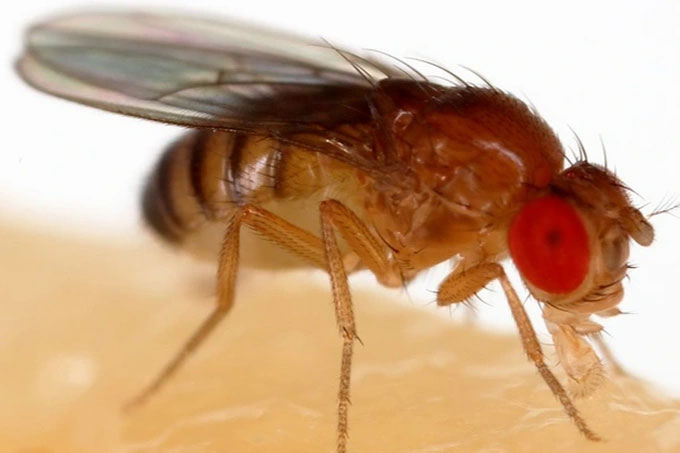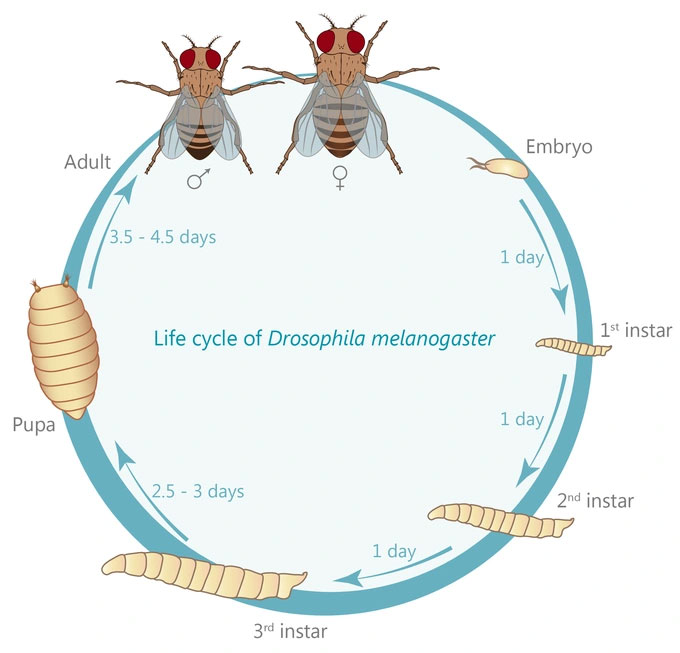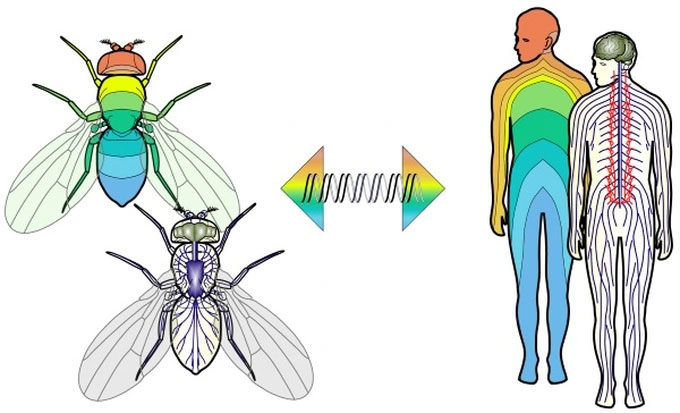Flies can cause many annoyances to daily life. But in terms of science, they really have created an extraordinary revolution.
Like mosquitoes, flies belong to the order Diptera – a group of two-winged insects – and are known for more harm than good. However, we should not judge these insects solely because of their negative behavior.

A fruit fly perched on a banana. (Image: Wikimedia Commons).
In the book ” The Secret Life of Flies “, author Erica McAlister – British entomologist, appreciates the role of flies in nature. “Imagine a world without flies to decompose animal carcasses,” she wrote .
Fruit flies (Scientific name: drosophila melanogaster) were first mentioned by the German entomologist Johann Meigene in 1830. Since then, they have become the best understood animals on the planet, and at the same time act as a modern medical research machine.
According to statistics, up to 10 scientists who have studied Drosophila flies have been awarded the Nobel Prize in Physiology or Medicine. Along with that are more than 10,000 researchers worldwide who are working with fruit flies in many scientific fields.
The agent that creates breakthroughs in science
In the early 1900s, biologist Thomas Hunt Morgan at Columbia University, New York, decided to test evolutionary theories, notably Gregor Mendel’s theory of heredity, combined with genetic mutation methods. association on fruit flies.
His mass breeding experiment produced an average of 100 fruit fly eggs per day, and helped create a new generation of fruit flies in about 10 days.

The life cycle of fruit flies. (Photo: Walter-lab).
From those experiments, Morgan discovered a single fly with white eyes, instead of red eyes like fruit flies usually have.
By intensively studying this particular individual, Morgan has demonstrated that genes can mutate and arrange in orderly maps to reproduce on entirely new chromosomes.
This discovery laid a solid foundation for the field of classical genetics as we know it. It also contributes to answering mankind’s questions regarding the transmission of certain genetic diseases.
In the 1940s, two scientists, George Beadle and Edward Tatum, also successfully demonstrated that certain genetic codes in fruit flies can facilitate chemical reactions and produce the necessary molecules. in the cell.
In 1995, three scientists won the Nobel Prize for their contributions to gene networks, where components of genes interact to control a specific cell function, thereby determining the development and how genetic disorders occur.
Comparison of the fly genome with that of humans
Humans and flies differ in both shape and body structure . We are higher animals, and flies are only lower insects.
This comparison may sound lame, but in fact, scientists have discovered that the genomes of flies and humans have striking similarities.
In it, many human genes can even assume the function of their fruit flies when introduced into the genomes of these individuals.

The genomes of flies and humans have striking similarities. (Photo: Brandeis University).
It seems that a common ancestor created the evolutionary lines of flies and humans half a billion years ago. They were equipped with such a perfect biological system that many aspects of it are still preserved today, such as the growth mechanism or the function of neurons.
Because humans and flies are so genetically similar, many aspects of human biology, including infectious diseases, have been scientifically decoded thanks to this insect.
Research on fruit flies is also appreciated as a fast, cost-effective and extremely flexible method for making scientific discoveries.
According to Sciencealert , it is estimated that more than 10,000 researchers worldwide are working with fruit flies in many scientific areas related to human biology and disease.
Areas of interest include research into cancer, aging, developmental processes, the gut microbiome, stem cells, muscle and heart…
In addition, this insect is also the subject of neuroscientists used to study learning, memory, sleep, aggression, addiction and neurological disorders.
